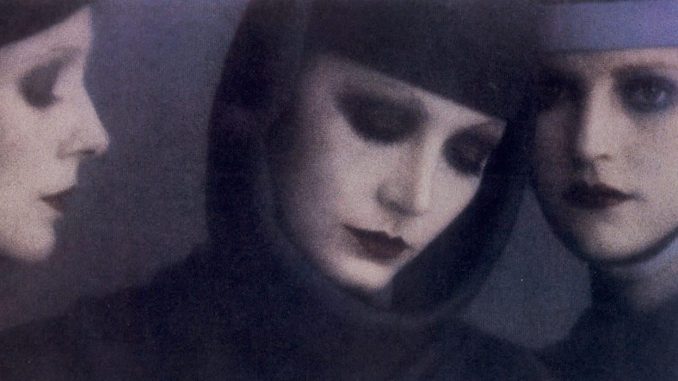
Like the trace of cigarette smoke that has dissipated in the Howard Greenberg Gallery Wednesday afternoon, Sarah Moon’s artistry is simultaneously unmistakable and indistinguishable.
In New York from Paris to install a new exhibition in the East 57th Street space, the photographer and filmmaker offered a preview while chatting about her work. Nonchalant about the depth of her talents, Moon, 83, periodically shrugged her shoulders, as if to punctuate the inexplainable nature of everything she does. Even her attire — a dark gray cashmere sweater with one collar of her black blouse tucked in and the other out, a silver beaded necklace, a hidden stack of slim silver bracelets, a sizable, coiled silver ring, black blouson pants and black sneakers — relay an insouciant energy, despite being one of France’s most renowned contemporary artists. The occasional glint of the lighter that she held in one hand only seemed to unintentionally underscore that point.
Having worked with Howard Greenberg for years, Moon said she was happy to oblige the request for a show, provided it would not be solely about fashion. “That’s the way I work. I do fashion, but I also do other things. For me, it’s linked with the work,” she said.
Bowing Saturday and on view through April 6, “Sarah Moon: On Edge” features 30 images that dreamily span four decades of work. Ethereal photos of fashion from Dior, Hussein Chalayan, Yohji Yamamoto and others are interspersed with painterly black-and-white shots such as the shadow on a New York City skyscraper, someone she worked with carrying a pole on a tightrope with a bar in hand, and an abstract take on The Eye in London, which conceals the ferris wheel tourist attraction that it is. An overhead shot of the lower half of a woman lying in the grass in a long skirt and patterned stockings is mirrored by the lily pad nearby. “That was a fashion photo. I was supposed to photograph a hat, but then I saw her legs,” Moon said.

Photo by Sarah Moon/Courtesy Howard Greenberg Gallery
But Moon contends that no image is the image, preferring to lay out the show sequentially, which adheres to the French belief of “assemblage“ in that “two photos make a third one.” She explained, “And when you move on, it has a meaning.” Passing by a photo that highlights Coney Island’s skyline next to “Papillon by Christian Dior,” 2022, Moon said, “It’s more about sequence. As you move normally from there to there, it’s the same story. It’s all about architecture and mood.”
Agreeing that the symmetry can be seen, Moon said, “That’s the thing — you can see it. If you ask me why, it takes a long time. I can’t really explain the link. To explain really distorts the meaning.”
To relay that point, ever so soft-spokenly, as pretty much every word Moon utters is, she referenced a Samuel Beckett quote that she has featured in a museum show, “’Saying it without knowing what,’ [laughs] So I hide behind this sentence, because it is not mine.”
Moon’s work will be in the spotlight in an exhibition at the Fundación Foto Colectania in Barcelona that will be unveiled on June 19. Visitors will find her latest film, a 20-minute piece about “what she does,” she said. Her work is also featured with Martin Parr’s and other stand-out talents in a group show at the Serrería Belga Cultural Space in Spain through the end of March.

Photo by sarah Moon/Courtesy Howard Greenberg Gallery
Her experience as a former fashion model has resulted in not only an understanding of modeling but also a certain complicity with models. “With me, they know they are not onstage but backstage. That’s the way I was in the beginning, and it is how it is now, even though they could be my children. It’s [a matter of] confidence and trust,” she said. “It’s a dialogue. They have the first part, and we work together.”
Moon’s love of fashion has always stemmed from a different reason — “for the dream it carries for a woman,” she said. “There’s a reason you choose [what you do.] You don’t know if it’s for you or not for you. You just want to identify.”
Modeling work led her to start taking photographs of her friends and colleagues. Of course, fashion has shifted, considering the heroines are no longer Marilyn [Monroe], [Greta] Garbo or Lauren Bacall. “They are in the music industry. Young girls identify more with music idols. There is also a wider range [of heroines],” she said.
However much fashion changes, “there is always a dream in fashion whether you can afford it or not, or taken or it not. It is probably for the young woman and then it becomes more collective. There is a desire of looking that way or another way. And it is fashion. It changes with the times. Fashion is on time,” said Moon, an International Photography Hall of Fame and Museum inductee.
Partial to Japanese designers for their eternalness, the photographer favors structured silhouettes such as those by Chalayan, Dior’s Maria Grazia Chiuri and Yamamoto, whose designs are featured in the show.

Photo by Sarah Moon/Courtesy Howard Greenberg Gallery
Most days are nonstop for Moon, who brings her camera everywhere, playfully using her hands to signal tunnel vision. “That’s what I love.…As long as I can do it, I think it is a privilege at my age.”
Fashion jobs are less of a focus though as the lenswoman is increasingly drawn more to filmmaking and what impresses her. More than anything though, Moon hopes that people will hear her “little song” when they see her work. “If they hear it, it is better than if they don’t.”
SOURCE: Women’s Wear Daily

